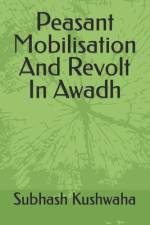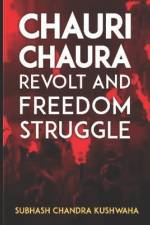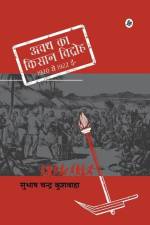av Subhash Chandra Kushwaha
279
THE Chauri Chaura revolt is an extraordinary episode of India's freedom struggle which brought to the fore the revolutionary aspect of peasant revolts in the second stage of the Non-Cooperation Movement and exposed, during the liberation struggle for attainment of Swaraj, the sham that only had twists in it. If the first phase of the Satyagraha was wrapped after stigmatising the workers' revolt at Bombay, the second phase was withdrawn after tarnishing the image of the Chauri Chaura revolt. The principles of the forces, which have been defaming these revolts in history, have no place for figures like M N Roy, Deshbandhu Chitaranjan Das and Subhash Chandra Bose, down to Bhagat Singh. The umbilical cord of these forces was also connected with the cunningness about grabbing the leadership of the peasantry while being in league with the feudal class. In history, generally, such instances of cunningness have also been a tool of the elite sections to keep a check on the restlessness among the marginalised people and to discourage their attempts at revolt.Whenever the revolt of Chauri Chaura flashed in my mind, I thought whether the neglect instead of a glorification of this lone act that devastated the British rule during our freedom struggle, was not a part of the class character of the Indian feudal society where the poor peasants, Muslims and the so called lower castes have always been neglected and despised. I also thought about how much the struggle being led by the Congress for liberation from the British thraldom was against the exploiters and how much it was in favour of the poor, illiterate and toiling people. Or, to what extent it was a real struggle for freedom and how much it had a hidden agenda of cunningness.The tide of popular revolts during the Non-Cooperation Movement rose with the idea and conception of national volunteers instead of the Khilafat and Congress volunteers. Subsequently, the bourgeois leadership, frightened by the intensity of the revolts which this idea gave rise to, makes a retreat, and then not only the Muslim leadership is gripped by apprehensions; the feudal lords too come to believe that the forest fire of popular revolts in the face of repression could also scorch them along with the British power. As such, they start thinking about how to control them. For this purpose, they use the unfailing weapon of non-violence --- the weapon which took the religious-minded masses to the fantasies of 'past glory' or a 'golden age.' It got them entangled in the saintly sermons about braving the pain, not hating the oppressor, and not resorting to violence in response to atrocities.The forces which moulded the history according to the viewpoints of kings and emperors, tarnished the history of people's struggles, what to talk of moulding history from the people's viewpoint, in order to add lustre to their own colour with the help of miracles and supra-human forces. In order to exploit the situation, they always used the trick of dangling dreams before the poor majorities. Their class base rested on the principle of deceiving many for the sake of a few and protecting the interests of a few at the cost of many. It is obvious that, for such people, the peasant revolt at Chauri Chaura could only be an obnoxious and criminal act. They have no reply to the question about which issues the Non-Cooperation Movement raised for the benefit of the peasantry. Was the demand of zamindari abolition or of no-rent payment ever raised at the time in a forceful and effective manner, in the interest of the poor? From the ranks of the then existing leadership, was a single comment or voice of opposition ever heard against the zamindars' atrocities? However, when the people moved forward on their own the challenge the zamindars and the colonial power, obstacles were created again and again to stem their tide.



